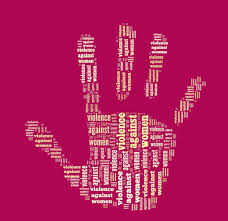Violence against girls:Let’s talk about it
To create awareness among young kids about sexual abuse, parents and teachers could teach them about a ‘good touch and bad touch’ initially, and with growing age and knowledge, they will understand and speak about sexual abuse
A few weeks ago, there was a shocking news story about the rape of a seven-year-old daughter of a maid by her 50-year-old master in Kathmandu. The minor used to accompany her mother when her school was closed. The mother would be busy in the household chores while her daughter played on the premises. According to the girl, the man had sexually abused her quite a few times while her mother was busy. Initially, she did not know what he had done to her. She reported to her mother when she had pain in her genitals.
When there is violence against women (VAW) and girls, such as rape, acid attack or domestic violence, the chances of suicide and homicide are high. This girl is lucky in a way as she did not have to lose her life after rape. Murder after rape is common these days. However, this nightmare will haunt her for long. The trauma and stigma may be more painful and intolerable than death.
Along with the physical harm, a survivor of rape has to live with the psychological and social problems throughout life. Research has shown that the psychological effect of rape leads to various mental problems, such as depression, anxiety, suicidal tendency and self-harm, lower self-esteem and personality disorder, which cause deterioration in the victim’s quality of life by reducing her autonomy and productivity. This is because violence and its long-term effects deprive women and girls of the opportunities to build their life and career, such as education, employment, political engagement, social networking, health benefits, social benefits and many more that boost their confidence, self-esteem and skills to tackle the life challenges. Gender-based violence hinders the mission towards gender equality, women’s empowerment, national development and sustainable peace worldwide.
VAW is a by-product of the patriarchal system and unequal power relations. Since ancient times, women have been considered inferior to men, and at times of war, rape has been used as a weapon against women and girls to weaken the other party. Giving continuation to this culture, even today in the 21st century, women and girls are the main target of violence during a political conflict.
A couple of years ago, Rohingya Muslim (an ethnic group residing in Rakhine State in Myanmar) women and girls were raped by the militias during the military crackdown. Many Nepali girls and women also faced sexual violence at the hands of the army during the decade-long armed conflict. Gendered norms created long ago have made them seem meek and docile while men are born with the right to control others and exercise power. Thus, this social structure and societal acceptance of men’s control over women has contributed to growing cases of rape and other forms of VAW.
VAW cases are directly or indirectly related to the socio-economic status. Analysis of the rape of minors shows that the survivors mostly belong to the economically poor and socially backward communities. It seems that the perpetrators prey on them because they can be easily lured and also because their families are unable to fight against them due to the cumbersome legal procedures. Similarly, physically and mentally challenged girls and women are highly prone to rape and violence. Earlier, rape and murder of minors were reported more in the rural areas, but these days, they are on the rise even in the cities.
According to the Nepal Police Headquarters, 101 girls were raped in Kathmandu last year. Another annual report, Anbeshi 2018, published by Women’s Rehabilitation Centre, said a total of 130 cases of rape were reported to them last year where 63 per cent of the rape survivors were children below 16 years while 46 per cent of the perpetrators were neighbours and 16 per cent family members.
A rapist is sentenced to 10-20 years in prison, according to the existing laws. However, in most cases either the perpetrators are not identified or politically protected or the case is settled through mutual agreement. The penalty for the perpetrator of such a heinous crime is not very harsh, although it not only breaks the girls and women physically and emotionally, but also creates a vicious circle of further abuses and social stigma.
It’s high time to start teaching and talking about sexual abuse and rape at home and in school to prevent more damage from occurring. To create awareness among young kids about sexual abuse, parents and teachers could teach them about a ‘good touch and bad touch’ initially, and with growing age and knowledge, they will be able to understand and speak about abuse and other forms of violence. Research also shows that it is better to talk about these sensitive issues as early as possible with a play methodology.
However, in Nepal, parents ignore their children’s complaint or ask them not to talk about such matter to anyone even if the case is serious. Thus, this culture of silence and obedience is motivating men to abuse children and even commit rape when they find an appropriate setting. But if the parents encourage and allow their children to speak about the wrong things that are happening to them by assuring that they are their best friends with whom they can share everything, many of such dangers could be prevented. A small and simple step can bring a big change in the young minds and later in life.






